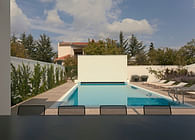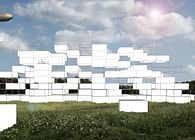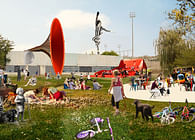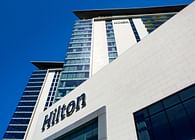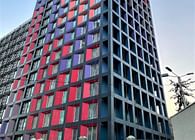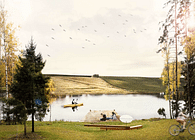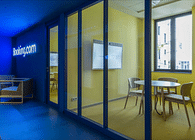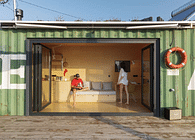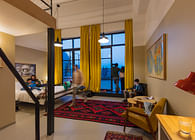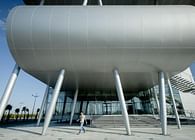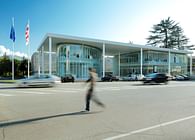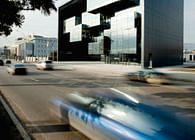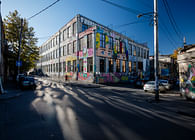
Tbilisi, GE
Program: Hotel | 30 000 sqm
Team: Devi Kituashvili | Gogiko Sakvarelidze | Maria Pelangia | Marita Rurua | Dachi Chezhia | Salome Katsadze | Teona Rekhviashvili | Lili Jokhadze | Mariam Gongladze | Giorgi Iashagashvili
Collaboration: Paralel Visualization Studio
The project area is located on the premises of Ambrolauri municipality, Racha, Georgia, on the shore of Shaori lake. Surrounded by mixed forests, the location is close to the village Nikortsminda and several historically important sites that highlight the interesting location of the area.
As interest in Racha grows, the place acquires strategic importance for tourism development. Racha is one of the untouched and least populated parts of Georgia. Its architecture is heavily influenced by wood - the dominant local material. Usage of manufactured wood and the art of woodworking are clearly visible in both the interior and exterior of local buildings. Designing the hotel on Shaori lake was a unique chance of reimagining the architectural traditions of Racha and create a sustainable development concept.
During the analysis of the area, the clear direction and orientation of the area are identified. Dictated by the physical image, the natural resources distribution, and the shape of the land, the conditioned direction became an architectural concept for the master plan. The inclined axis of the projected territory acquired the function of an arrow, which became the direction of the hotel building and its spatial decision, leading to the panoramic lake view from both sides of the building.
An axis pointed to the water gathers and gradually directs the main functions of the master plan towards the shore. It becomes the uniting line, an extension of the hotel and its direct access to the water. The functions evolve from the lobby into the dining area with a lake view. The area progresses into the outdoor deck leading to the shore, entailing the outdoor pool, bar, and restaurant, alongside the stairs and platforms allowing for the space to enjoy the natural scenery.
Considering the principles of sustainable development and design as well as the desire to use the region-relevant material, Glulam became the main architectural and construction material of the building.
Glulam, the glued laminated timber, is an innovative, widely used construction material enabling and ensuring the stability of the massive construction. The production of glulam consumes less energy and leaves fewer carbon traces, therefore using it helps to meet the sustainable development goals. Furthermore, glulam buildings need fewer construction elements leading to the saving of the resources.
Along with construction advantages, the structural frame of glulam defines the architectural language of the building.
Status: Competition Entry
Location: Shaori, GE
Additional Credits: Paralel Visualization Studio

